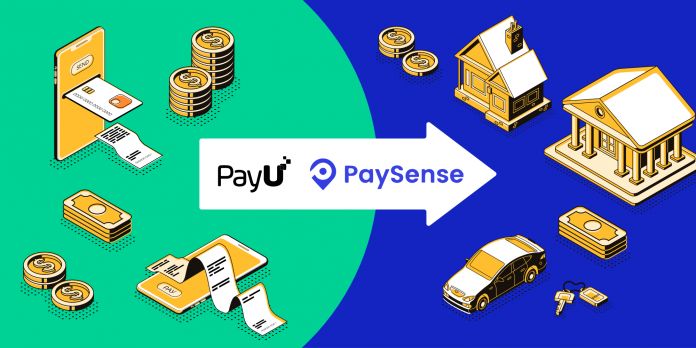This article has been written by Alivya Sahay, pursuing the Diploma Programme in M&A, Institutional Finance, and Investment Laws (PE and VC transactions) from LawSikho.
Table of Contents
Introduction
Growth and development in any company are marked by the virtue of the integration of acquisitions made by it in order to meet its strategic objectives. One of the pivotal pillars of PayU in business growth strategy is the acquisitions done by it. Worldwide, PayU in totality has injected a total of almost $1 billion in M&As in the last couple of years for its expansion and growth. LazyPay and PaySense are seen to be India’s fastest growing digital platform which offers the service of consumer lending business. Last year in January, just before the pandemic struck globally, PayU announced to acquire a controlling stake in Nexus Venture Partners-backed fintech start-up PaySense with an asset evaluation of $185 million. Furthermore, PayU will infuse an aggregate of up to $200 million in the new venture as value capital; $65 million of the aggregate sum will be quickly invested, while the equilibrium corpus will be mixed in the following 24 months to develop the credit book.
Citrus Pay was acquired by PayU in 2016 and proved to be one of the most rewarding mergers in the fintech industry as was seen from the business and cultural perspective. Citrus Pay had a major role to play in enhancing the start-up and entrepreneurial flexibility of PayU. One of the primary reasons why PayU went for an acquisition is for the purpose of increasing its revenues, customer expansion, and technological advancements. Cultural Integration is pivotal for any successful integration for infusing talent synergies between the organisations and has been the linchpin of the mergers with CitrusPay and PaySense which turned out to be a success. This move shows PayU’s responsibility towards putting into and building a more extensive fintech ecosystem in India around centre installments and loaning organisations. The emphasis is on developing advanced loaning to customers, utilising the appropriation organisation of our dealer connections and information assembled through our installments stage to improve credit scoring. PayU meant to keep on reinforcing its position naturally by looking for operational efficiencies through automation and simultaneously proceeding to invest in platform consolidation and security worldwide. This converge will unite two profoundly integral organisations, each with a phenomenal standing in the alternative lending space.
Understanding the dimensions of the payment gateway PayU
PayU is a leading payment gateway for vendors in successful markets and important cross-border players. It has a market base with around 20 markets across the globe, operates with 300 payment platforms with 300 payment options, with an estimated population of 2.5 billion. It has dominance in seven of those markets. It mainly functions in Latin America, India, and Central and Eastern Europe. The latent intent of the organisation is to facilitate both the merchants and consumers to carry out its transaction online in a safe environment. The two broad services that are offered by PayU are –
- as a payment service provider (“PSP”) and
- as a technology service provider (“TSP”).
One of the major ways by which revenue is generated is from volume-based transaction fees. In India, it chiefly faces rivalry from BillDesk and CCAvenue. PaySense as of now gives online credits to various purposes including individual use, vehicle financing, financing for marriages, vacations, and home restructuring. It currently claims to deal with an AUM (resources under administration) in an overabundance of Rs. 500 crores. It has over 5.5 million enlisted clients with loan disbursement of over Rs. 1,100 crore till date. Then again, PayU’s LazyPay gives clients a pre-approved credit line beginning at ₹5,000 or more. Clients can make their online buys utilising the credit line, and settle bills on a month-to-month premise with LazyPay.
PaySense has been developing at a quick speed and has increased the business multifariously. It bases an imaginative credit decisioning model, by utilising great many information focuses to profile individuals dependent on their monetary behaviors inside a Social Graph of countless possible borrowers. One of the earliest investors of PaySense, Nexus Venture Partners, will exit this venture in the lending start-ups under the current PayU bargain. Nexus had put $2.3 million in PaySense in a seed round in mid-2015 and had additionally siphoned in more cash into the start-up across two diverse financing rounds in 2017 and 2018.
Considering the risks involved
An acquisition involves a significant degree of risk. The operations of the target company might be attracting significant regulatory or compliance requirements and failure to meet these could present a different level of compliance and reputational risks. The board needs to consider how supportive the existing shareholders are, for an acquisition. Where the work environment of a company is quite mature and advanced, the acquisition may turn out to be difficult in terms of culture acquisition. It is imperative to lay emphasis on the fact that, in and of themselves, differences in cultures of the companies need not be major issues. However, when culture diligence uncovers huge contrasts in administration and the executive’s styles or significant disengagements in some other parts of the way of cultural framework, it is essential to proactively address them so the organisations can cooperate viably in both the short and long terms.
Can cultural differences between PayU and PaySense harmoniously co-exist together?
If the companies are flexible to embrace change, adjust to new work policies and prioritise growth, the cultural difference, far from causing trouble, can be a means to traverse change. The operations of the target company should also be either complementing the activities or be capable of being carried on simultaneously with the existing activities of the company. Alternatively, there can be a plan in place to retain certain activities or product portfolios of a target company and gradually wind down the other activities or the framework surrounding the products.
PaySense which started as a start-up merged with LazyPay which is a credit business. Since the credit industry is kinetic in nature and hence, offers a wide ambit to eliminate errors and trials. As the market currently is opportune for digital exploration, the deftness and dexterousness of a start-up like PaySense are required. Since the synergies of both the organisations for doing business were aligned, the cultural difference was not a botheration as such.
The cultural difference between any company being acquired or merged should not be viewed with a bird’s eye point of view, but with a wide ambit. As the organisations should be learning and embracing from each other in terms of talent, work policies, and deliberate integration as against a cost optimisation mindset. As the management team of PaySense had pretty seasoned tech and fintech experts, it helped in contributing and adding utility to the PayU’s credit team in turn helping the combined business to flourish.
The emphasis is on developing advanced loaning to customers, utilising the appropriation organisation of our dealer connections and information assembled through our installments stage to improve credit scoring. PayU means to keep on reinforcing its position naturally by looking for operational efficiencies through automation and simultaneously proceeding to invest in platform consolidation and security worldwide. PaySense has the vision to turn into a major leader for leading risk assessment providers for more than 160 million Indian families, right now underserved by customary credit routes.
Conclusion
PaySense’s aspiration is to focus on those ‘new-to-credit’ bits by considering their social and behavioural data and thereby assess creditworthiness, which is an ideal fit for PayU; as the organisation creates a top-tier client experience for a wide scope of clients. The merger tended to be a part of PayU’s drawn-out vision of organising a fintech environment in India by teaming with the right organisations and offering various monetary assistance. PayU’s unified digital credit platform will enable third parties such as banks, NBFCs, and alternate lenders to co-lend and grow assets and will also enable borrowers to access credit when and where they need it in a digital and seamless way.
References
- PayU consolidates India digital credit service | PayU
- https://www.zeebiz.com/small-business/news-payu-to-acquire-paysense-for-185-mn-merge-it-with-lazypay-117321
- PayU invests USD 11.5 million in PaySense | PayU
- https://timesofindia.indiatimes.com/worklife-june-7-2021/newslettertoi/msid-83307314.cms
Students of LawSikho courses regularly produce writing assignments and work on practical exercises as a part of their coursework and develop themselves in real-life practical skills.
LawSikho has created a telegram group for exchanging legal knowledge, referrals, and various opportunities. You can click on this link and join:
 Serato DJ Crack 2025Serato DJ PRO Crack
Serato DJ Crack 2025Serato DJ PRO Crack










 Allow notifications
Allow notifications



